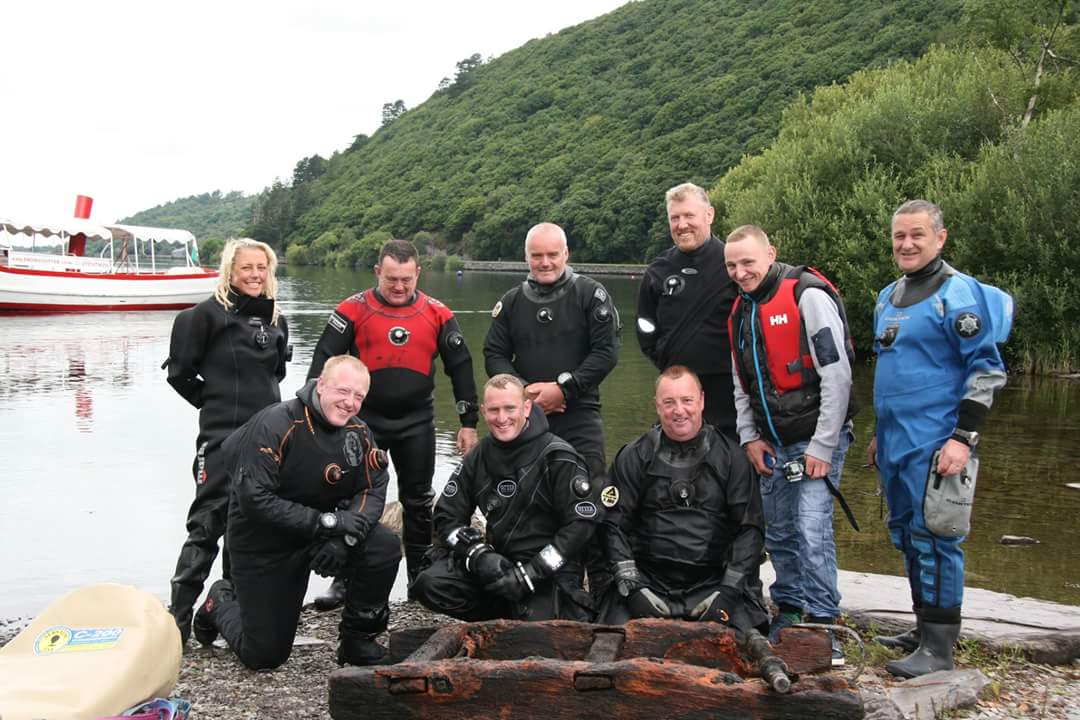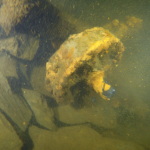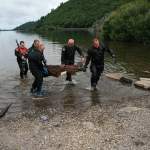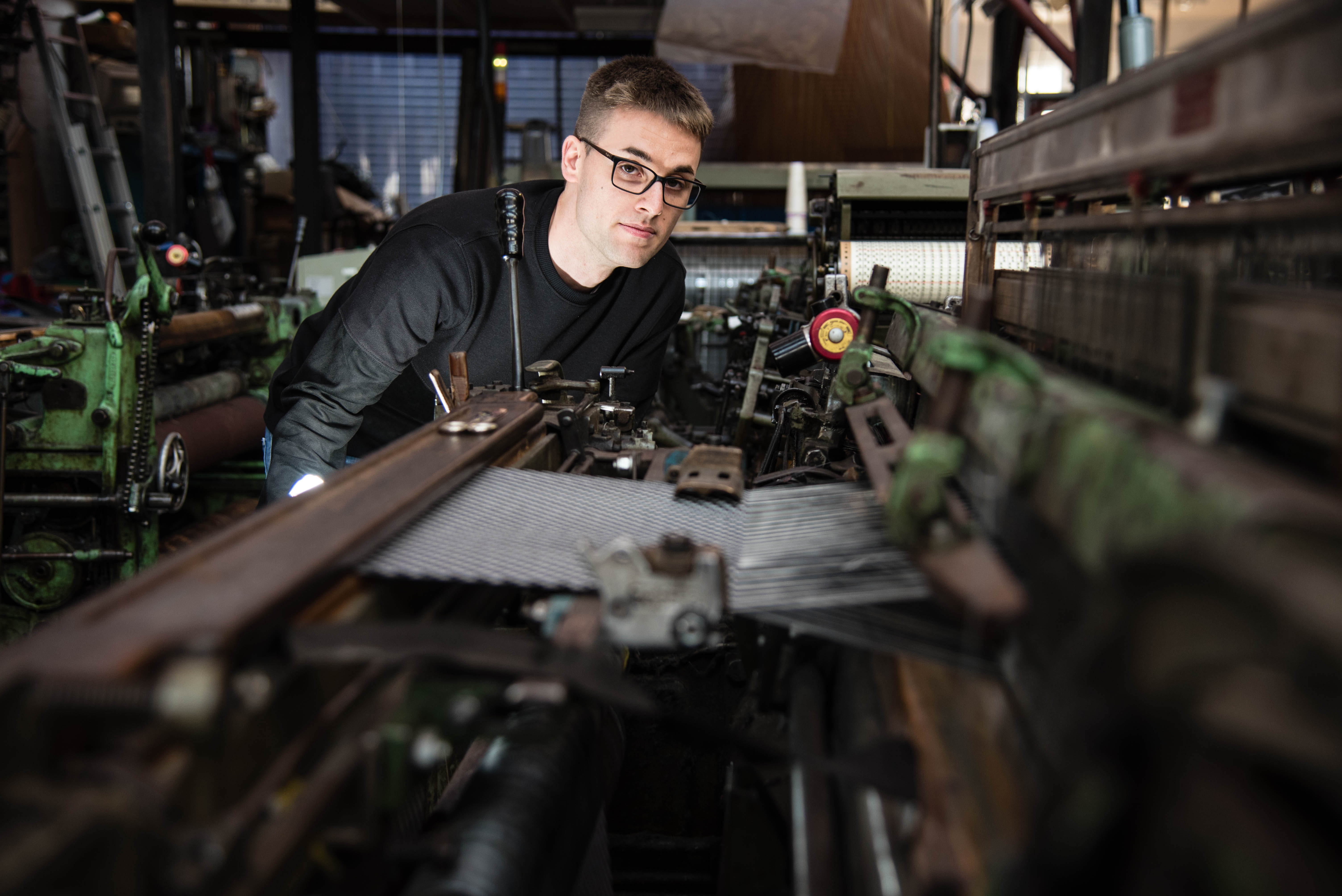A team of history-loving scuba divers from Anglesey have raised a wagon used to transport Welsh slate more than 110 years ago, from the depths of a North Wales lake.
Members of Rhosneigr Sub-Aqua Club, a branch of the British Sub-Aqua Club (BSAC), discovered the important piece of industrial history while diving Llyn Padarn at Llanberis, in Gwynedd.
They returned to raise the wagon using a giant inflatable balloon to carefully lift it from the bed, and now the wagon will go on display at a museum run by the nearby Llanberis Lake Railway.
The wagon, thought to be more than 110-years old, was once used for transporting loads of slate from the nearby Dinorwic Quarry to Dinorwic seaport at Y Felinheli.
With a wooden chassis and measuring around 4ft long by 3ft wide, the wagon is believed to be one of those used to carry slate on the old Padarn Railway to the Port.
The railway opened in 1842, replacing the previous Dinorwic Railway and ran until the quarry closed in 1969. An unusual feature of the railway was its transporter wagons. These 4ft gauge vehicles were flat with two parallel 1ft 10 3/4 in gauge tracks fitted to them.
Loaded slate wagons of the same gauge were wheeled aboard and then carried four at a time down to Port Dinorwic where they were unloaded via a 2ft gauge incline which led to the quayside.
It’s believed that because of its wooden base, the recovered wagon may be one of the earlier types used.
Rob Geal, 30, from Newborough on Anglesey who is diving officer for the Rhosneigr SAC, which has been in existence for about 30 years and has 14 active members, described how the historic find was made.
He said: “A lot of the time we dive at sea off the North Wales coast but sometimes we come to inland waterways for a change of scene.
“Two years ago a group of eight of our members, including myself, were diving in Llyn Padarn when just below the site of the old quarry hospital and the current rail tracks we came across the wagon lying on the lake bed about 20 metres down.
“We examined it and as it looked very interesting we decided it would be a good idea to come back at some time in the future and try to raise it.
“Earlier this year I was elected as the club’s Diving Officer and was looking for a project which was a little different to create some interest amongst the members.
“We thought it would be a good idea to try to recover the wagon from the lake and started planning seriously how we’d do it about two months ago.
“We bought ourselves a top of the range 100 kilo lifting bag, which is basically a balloon that can be taken underwater, attached to an object and then inflated to bring it gradually to the surface.”
Rob, whose day job is selling firewood and working in civil engineering, said: “A group of eight of us from the club went over to Llyn Padarn to do the lift of the wagon.
“With our own boat waiting on the surface we went down and attached special straps capable of lifting up to four tons to each corner and then fixed them to the bag, which was then gradually inflated using air from our own personal cylinder and a separate one which comes with it.
“It’s heavily silted on the lake bed which can affect the visibility but after about four hours we’d managed to completely raise the wagon to the surface.
“When we examined it we found that quite a bit of it was still intact, including the wooden chassis, one of the four metal wheels it originally had, a wrought iron shaft connecting the wheel to the axle and a piece of wrought iron for connecting it to other wagons.
“We decided that as it must be part of the history of the old slate railway we’d hand it over to the Llanberis Lake Railway and, after an initial inspection, they told us that because it has a wooden chassis it must be one of the earliest used on the line which would make it at least 116 years old as the wagons were all-metal after 1900.
“It’s great to think that we’ve recovered a piece of the region’s industrial history.
“It was certainly a good exercise as far as we’re concerned and one of the most interesting things we’ve ever found. All we usually see when we go down is the odd dumped car.
“We think the wagon weighs about 70-80 kilos, so it’s definitely the heaviest thing we’ve lifted so far.”
BSAC is the national governing body for scuba diving and is made up of 120 dive centres and 1,000 plus family friendly and sociable clubs, run by volunteers, up and down the country and abroad. The Duke of Cambridge is the club’s President.
It represents more than 30,000 scuba divers and snorkellers and welcomes new members from complete beginners upwards including those who have trained with other agencies.
Mary Tetley, chief executive of BSAC said: “It’s wonderful that this piece of Welsh slate mining heritage will now be conserved for future generations to learn about, thanks to the dedication and passion of a small group of our members.”
Emlyn Pritchard, manager of the Llanberis Lake Railway, said he was delighted that the club decided to hand over the wagon to them.
“It’s part of the heritage of this railway and the whole area and as such is an important industrial artefact.
“We’ve not yet done a full investigation but judging from its size and appearance it’s one of the wagons used on the old slate railway, part of the route of which we now run on.
“The divers found it close to the edge of the lake wall and I assume that at some time it fell off the tracks into the water.
“I think it’s one of the earliest types of wagon used for carrying the slate because it’s made from wood and after 1900 they were of all-metal construction.”
“We’ll be delighted to have it on exhibition at the railway.”
For more information about BSAC go to www.bsac.com or follow the organisation on Facebook or Twitter @BSACDIVERS.












